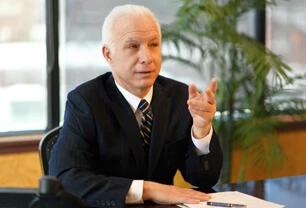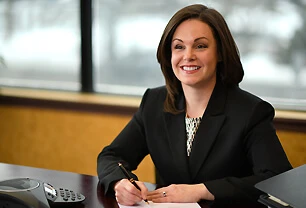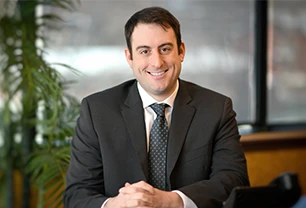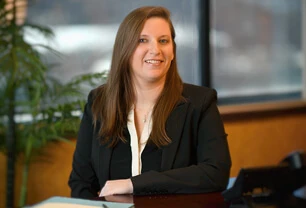The most common fatal construction accidents are falls, struck-by incidents, and electrocutions. A less common, but by no means less dangerous, type of construction accident is the confined space accident. According to the Bureau of Labor Statistics, over 1,000 workers died from occupational injuries involving a confined space between 2011 and 2018. While most confined space fatalities are in the construction industry, they are also common among farmers, extraction workers, and plumbers. Confined spaces pose a variety of threats for those who must work in them, and confined space accidents can cause serious injuries and death. If you have been injured in a confined space accident, you should speak to a Long Island confined space accident attorney to discuss your options for recovery.
What Are Confined Spaces?
“Confined space” is a somewhat nebulous term. The Occupational Safety and Health Administration (OSHA) classifies confined spaces as those that have the following characteristics:
- Are large enough and so configured that an employee can bodily enter
- Have limited or restricted means for entry and exit
- Are not designed for continuous employee occupancy
Spaces that meet the above characteristics may be considered confined, but they are not necessarily inherently dangerous. OSHA refers to potentially dangerous confined spaces as “permit-required confined spaces” or “permit spaces.” Those spaces have one or more of the following characteristics:
- Contain or have the potential to contain a hazardous atmosphere (e.g., flammable gas, low oxygen levels, toxic air contaminants, etc.)
- Contain a material that has the potential to engulf an entrant
- Have an internal configuration such that an entrant could be trapped or asphyxiated by inwardly covering walls or by a floor that slopes downward and tapers to a smaller cross-section
- Contain any other recognized serious safety or health hazard
Permit spaces are referred to as such because employees must have a permit to enter them. The permit must contain the name of the authorized entrant, information about the hazards present in the space, means of detecting the hazards in the space, instructions for summoning help, and other terms. Examples of confined spaces that could cause injuries to workers to include tanks, bins, vats, grain silos, ditches, channels, trenches, mines, sewers, caves, tunnels, manure pits, crawl spaces, and wells, among others.
The Dangers of Confined Spaces for Workers
Confined spaces such as those above poses significant risks for the workers who enter them. Some of those risks — such as cave-ins and the possibility of becoming stuck — are obvious. Others, however, are not so obvious and often go unnoticed until it is too late. Some of the dangers of confined spaces for workers include:
- Inhalation of toxic substances, such as nitrogen, argon, carbon monoxide, cyanide, methane, sulfur, and hexafluoride
- Asphyxiation caused by oxygen levels that fall below 19.5%
- Compression asphyxia, a type of asphyxiation caused when pressure on the chest — such as that caused by being buried in debris — prevents the lungs from expanding
- Fires and explosions caused by the ignition of flammable gasses
- Electrocution, such as that caused by working with live wires in subways and other types of tunnels
- Exposure to extreme temperatures
- Engulfing accidents are caused when underground spaces fill with water, sand, or sewage or when grain silos fill with grain
A particularly tragic risk associated with confined space accidents is the phenomenon of secondary fatalities, which occur when rescuers who attempt to extract trapped workers also die in the confined space.
Legal Options for Victims of Confined Space Accidents
Workers who are injured in confined space accidents (or their survivors in the event that the accident is fatal) have several legal avenues available to them for recovery. For more specific information, please contact a Long Island confined space accident attorney.
Workers’ Compensation
Many victims of confined space accidents may be eligible for workers’ compensation benefits. The workers’ compensation system is designed to help injured workers recover after work-related accidents. The key issue in most workers’ compensation claims is whether the accident was truly work-related. Generally, accidents and injuries are considered work-related when they arise out of or occur within the scope of the worker’s duties. For example, a worker who suffered third-degree burns in an underground explosion likely would qualify for workers’ compensation. On the other hand, a good samaritan bystander who was injured when trying to rescue a worker in danger would not qualify, as there was no employment relationship between the two parties.
Workers’ compensation provides both cash benefits and medical benefits to recipients. Cash benefits are equal to 2/3 of the worker’s weekly wage multiplied by the percentage he or she is disabled. For example, a worker who made $250 a week and who was 80% disabled would receive about $133 a week in cash benefits. Medical benefits cover the full cost of medically necessary treatment.
Third-Party Claims
A major caveat to the workers’ compensation system is that it generally precludes injured workers from suing their employers directly. While workers’ compensation relieves the injured worker from the burden of proving fault by his or her employer, many injured workers could receive greater damages awards in civil suits than they could obtain via workers’ compensation benefits. However, the prohibition on workers suing their employers for workplace injuries only applies to the worker’s employer — not any potentially liable third parties. If a third party (such as a contractor, subcontractor, customer, property owner, or manufacturer of defective products, for example) is at fault for the accident, the injured worker may be able to pursue a third-party claim against them. Workers who choose to pursue third party claims face the additional hurdle of proving fault, but they also may be able to recover damages that are not available in the workers’ compensation systems, such as pain and suffering.
Get Back on Track with Help from a Long Island Confined Space Accident Attorney
If you are unable to work due to an injury caused by a confined space accident, you may be eligible for benefits. To learn more, please contact a Long Island confined space accident attorney at Turley, Redmond & Rosasco by using our online form or by calling us at 877-693-2529 (New York City), 516-745-5666 (Garden City), 631-582-3700 (Ronkonkoma), or 631-399-0400 (Shirley/Riverhead).












